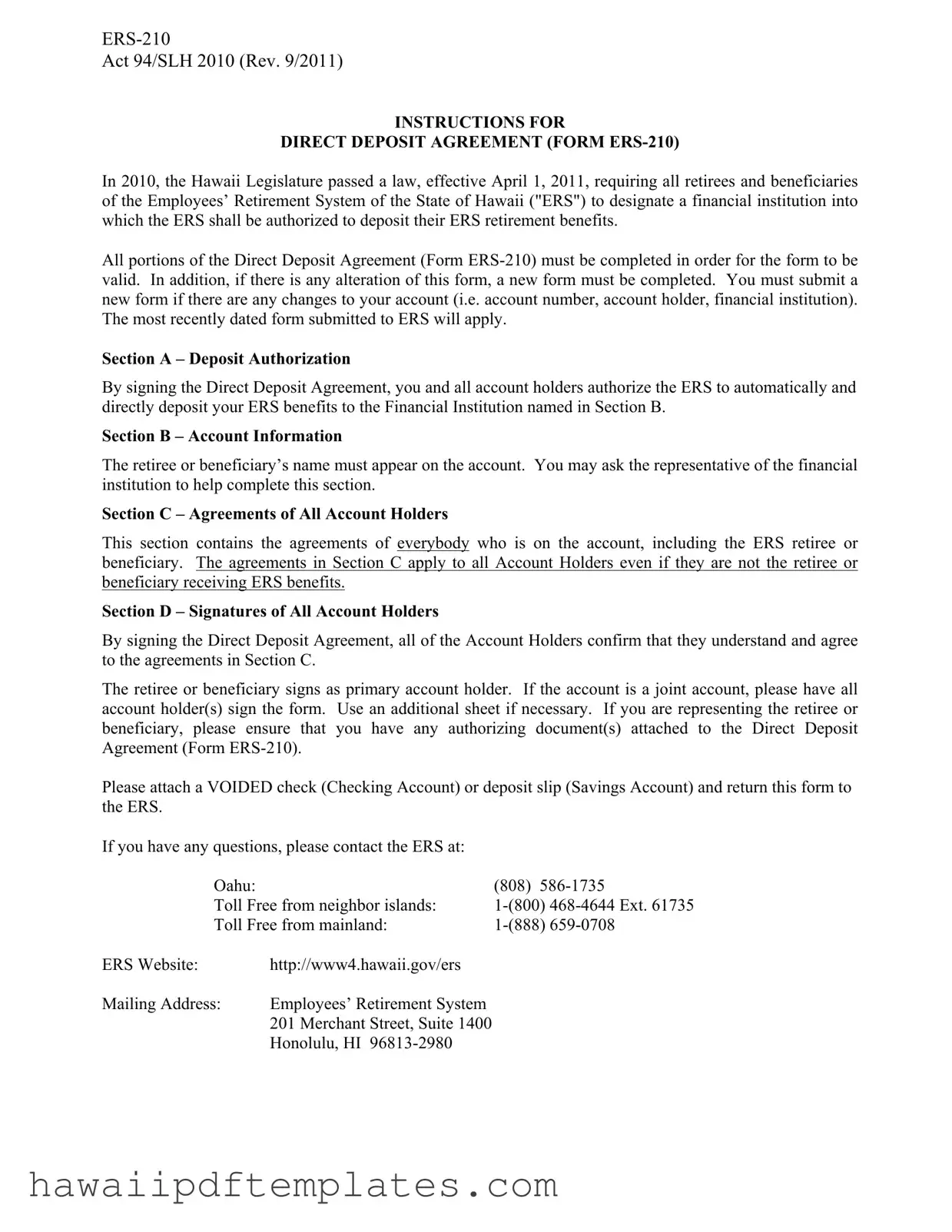Hawaii Direct Deposit PDF Form
The Hawaii Direct Deposit form, officially known as Form ERS-210, is a crucial document for retirees and beneficiaries of the Employees' Retirement System of the State of Hawaii. This form allows individuals to designate a financial institution where their retirement benefits will be automatically deposited. To ensure your benefits are received without delay, it's important to fill out this form accurately and submit it promptly.
Ready to get started? Fill out the form by clicking the button below!
Customize Form Online
